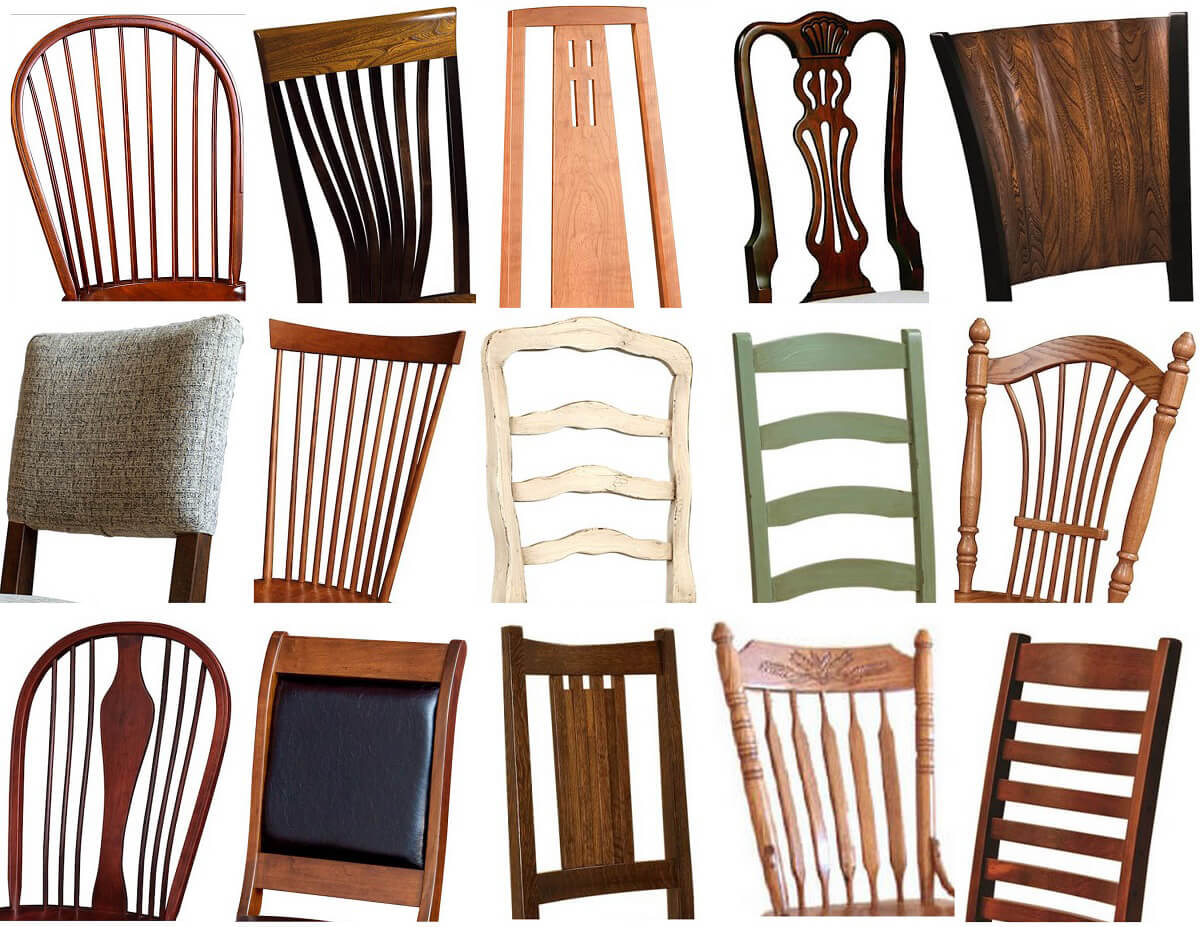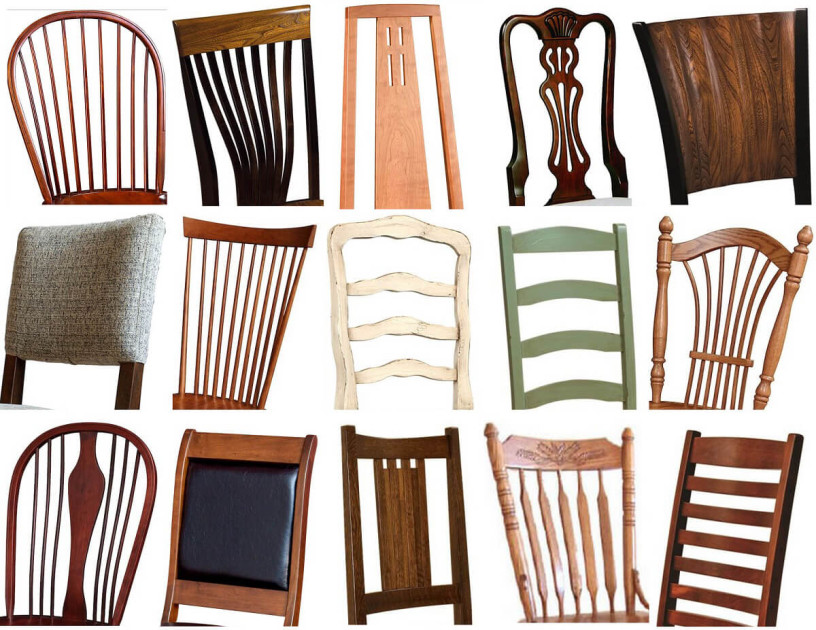Popular Dining Chair Styles: Dining Chair Styles Names

Dining chairs are more than just functional pieces of furniture; they are often the defining element of a dining room’s style. From classic and timeless designs to contemporary and eclectic choices, a wide array of dining chair styles exist, each with its unique characteristics, historical context, and modern interpretations.
Dining Chair Styles
Dining chair styles can be categorized based on their design, materials, and overall aesthetic. Understanding the different styles can help you choose the perfect chairs to complement your dining table and create a cohesive look for your dining space. Here is a list of popular dining chair styles:
| Style Name | Description | Historical Context | Modern Interpretations |
|---|---|---|---|
| Chippendale | Known for its elegant, intricate carvings and cabriole legs. Common features include a pierced splat, a padded seat, and a high back. | Named after the renowned 18th-century English furniture maker, Thomas Chippendale. | Modern interpretations often simplify the carvings while maintaining the overall elegant silhouette. They are frequently crafted from materials like mahogany, walnut, or cherry wood. |
| Queen Anne | Characterized by a curved back, cabriole legs, and a padded seat. The back often features a “fiddleback” design, resembling the shape of a violin. | Popular during the reign of Queen Anne in the early 18th century. | Modern versions are often upholstered in luxurious fabrics like velvet or leather and may feature a more streamlined silhouette. |
| Louis XIV | Known for its grand, opulent design, featuring elaborate carvings, gilded details, and rich upholstery. | Developed during the reign of Louis XIV in the late 17th century. | Modern interpretations often incorporate contemporary materials like chrome or acrylic, while still retaining the luxurious and majestic aesthetic. |
| Louis XV | Characterized by its curved, asymmetrical design, featuring cabriole legs, a padded seat, and a curved back. | Popular during the reign of Louis XV in the mid-18th century. | Modern interpretations often feature a more streamlined silhouette and may incorporate a variety of materials, such as metal, wood, and fabric. |
| Louis XVI | Known for its refined, symmetrical design, featuring straight lines, simple carvings, and elegant upholstery. | Popular during the reign of Louis XVI in the late 18th century. | Modern interpretations often feature a more minimalist design, with a focus on clean lines and elegant materials. |
| Mid-Century Modern | Characterized by its clean lines, minimalist design, and use of materials like wood, metal, and plastic. | Emerged in the mid-20th century, reflecting a shift towards functionalism and simplicity. | Modern interpretations often feature bold colors, geometric patterns, and innovative materials. |
| Scandinavian | Known for its minimalist design, natural materials like wood and leather, and focus on functionality. | Originated in Scandinavia in the mid-20th century. | Modern interpretations often feature a minimalist aesthetic, with a focus on sustainability and natural materials. |
| Industrial | Characterized by its raw, exposed materials like metal, concrete, and reclaimed wood. The design often features a distressed or weathered finish. | Inspired by industrial spaces and factories, emerged in the late 20th century. | Modern interpretations often incorporate elements of vintage industrial design, such as exposed rivets, metal accents, and distressed finishes. |
| Farmhouse | Characterized by its rustic charm, featuring simple designs, natural materials like wood and linen, and a focus on comfort. | Inspired by traditional farmhouse furniture, often featuring a distressed or weathered finish. | Modern interpretations often incorporate a mix of rustic and modern elements, such as reclaimed wood, metal accents, and contemporary upholstery. |
| Contemporary | Characterized by its sleek, modern design, featuring clean lines, geometric shapes, and innovative materials. | Evolved from modern design trends, often featuring bold colors, unique textures, and innovative materials. | Modern interpretations often push the boundaries of design, incorporating cutting-edge materials and technologies. |
Materials and Finishes for Dining Chairs

The materials and finishes used for dining chairs play a significant role in their overall style, durability, and price. Understanding the characteristics of different materials and finishes allows you to choose chairs that perfectly complement your dining space and meet your specific needs.
Materials Used in Dining Chair Construction
This section discusses the most common materials used in dining chair construction, outlining their advantages and disadvantages.
- Wood: A classic and versatile material for dining chairs, wood offers a wide range of styles, colors, and finishes.
- Metal: Metal dining chairs provide a modern and industrial aesthetic. They are typically strong and durable, often featuring sleek and minimalist designs.
- Upholstery: Upholstered dining chairs offer comfort and style, providing a soft and inviting seating experience. Upholstery can be made from various fabrics, including leather, velvet, cotton, and linen, each with unique properties and aesthetics.
- Plastic: Plastic dining chairs are lightweight, affordable, and easy to clean. They are often used in casual dining settings or outdoor spaces.
Advantages and Disadvantages of Dining Chair Materials
This section explores the advantages and disadvantages of each material commonly used in dining chair construction.
| Material | Advantages | Disadvantages | Popular Finishes |
|---|---|---|---|
| Wood |
– Natural beauty and warmth – Durable and long-lasting – Wide range of styles and finishes – Can be refinished and restored |
– Can be susceptible to scratches and dents – May require regular maintenance – Can be more expensive than other materials |
– Stain – Paint – Varnish – Lacquer |
| Metal |
– Strong and durable – Easy to clean – Modern and industrial aesthetic – Can be lightweight |
– Can be cold to the touch – May rust or corrode if not properly maintained – Can be noisy |
– Powder coating – Chrome plating – Anodizing – Brushed metal |
| Upholstery |
– Comfortable and inviting – Wide range of fabrics and colors – Can add a touch of elegance and sophistication |
– May require regular cleaning and maintenance – Can be susceptible to stains and wear – Can be more expensive than other materials |
– Leather – Velvet – Cotton – Linen |
| Plastic |
– Lightweight and affordable – Easy to clean – Durable and weather-resistant – Wide range of colors and styles |
– Can be less durable than other materials – May not be as comfortable as other materials – Can be prone to fading in sunlight |
– Glossy – Matte – Textured |
Dining Chair Finishes, Dining chair styles names
Dining chair finishes can significantly impact their appearance, durability, and overall style. The choice of finish depends on the material of the chair and the desired aesthetic.
- Wood Finishes: Wood finishes enhance the natural beauty of wood, protect it from damage, and add a touch of personality to the chair. Common wood finishes include stain, paint, varnish, and lacquer.
- Metal Finishes: Metal finishes provide a protective layer for the metal, enhance its appearance, and create a desired aesthetic. Popular metal finishes include powder coating, chrome plating, anodizing, and brushed metal.
- Upholstery Finishes: Upholstery finishes can add a touch of elegance and sophistication to dining chairs. The choice of fabric depends on personal preference, style, and practicality. Common upholstery fabrics include leather, velvet, cotton, and linen.
Choosing the Right Dining Chair Style

Selecting the perfect dining chair style for your space involves considering a blend of functionality, aesthetics, and personal preferences. A well-chosen dining chair can enhance the overall ambiance of your dining room, making it a comfortable and inviting space for meals and gatherings.
Matching Chair Styles with Table Designs and Overall Decor
The choice of dining chair style should complement the table design and the overall decor of the dining room.
- Traditional Dining Sets: For traditional dining rooms, consider chairs with intricate carvings, upholstered backs, and classic silhouettes like Chippendale or Queen Anne styles. These chairs will enhance the elegance and sophistication of the space.
- Modern Dining Sets: Modern dining rooms benefit from clean lines, minimalist designs, and geometric shapes. Chairs with sleek frames, upholstered cushions, and a contemporary aesthetic will create a stylish and functional dining space.
- Mid-Century Modern Dining Sets: For a mid-century modern aesthetic, choose chairs with tapered legs, rounded backs, and upholstered seats. These chairs evoke a sense of retro charm while maintaining a contemporary feel.
- Rustic Dining Sets: Rustic dining rooms often feature wooden tables with distressed finishes. Chairs with a farmhouse or industrial style, featuring natural wood, metal accents, or leather upholstery, will complement the rustic ambiance.
Examples of How Different Chair Styles Complement Various Dining Room Layouts
The choice of dining chair style can also influence the overall layout and functionality of your dining room.
- Small Dining Rooms: In small dining rooms, consider using chairs with a compact footprint, such as armless chairs or chairs with a slim profile. This will maximize seating capacity without making the space feel cramped.
- Open-Concept Dining Rooms: Open-concept dining rooms often flow into other living areas. Consider chairs with a transitional style that can seamlessly blend with the surrounding decor.
- Formal Dining Rooms: Formal dining rooms benefit from chairs with a refined and elegant design. Upholstered chairs with intricate details, such as button tufting or nailhead trim, can add a touch of grandeur to the space.
- Casual Dining Rooms: Casual dining rooms call for chairs that are comfortable and easy to maintain. Consider chairs with a simple design, such as wood chairs with cushioned seats or metal chairs with a durable finish.
Factors to Consider When Choosing Dining Chairs
When selecting dining chairs, it is important to consider several key factors:
- Budget: Determine your budget for dining chairs and explore options within that range. Dining chairs can vary significantly in price depending on materials, construction, and style.
- Comfort: Comfort is paramount, especially if you plan to spend extended periods of time at the dining table. Consider the seat height, back support, and overall ergonomics of the chair.
- Functionality: Think about the practical aspects of the chair, such as its durability, ease of cleaning, and whether it is stackable or foldable.
- Style: Choose a style that complements the overall design aesthetic of your dining room and your personal preferences. Consider the chair’s color, material, and silhouette.
Dining chair styles names – Dining chair styles encompass a wide spectrum, from the classic elegance of Chippendale to the modern simplicity of Scandinavian designs. A popular choice for contemporary dining spaces is the ikea black wooden high chair , which offers a blend of functionality and aesthetic appeal.
The sleek black finish and sturdy wooden construction seamlessly integrate with various interior styles, making it a versatile addition to any dining room.
Dining chair styles offer a wide range of options, from the classic Chippendale to the modern Scandinavian. To enhance comfort and style, consider adding a leather dining chair cushion , which can transform a simple chair into a luxurious statement piece.
The right cushion can complement any dining chair style, adding a touch of elegance and practicality.
